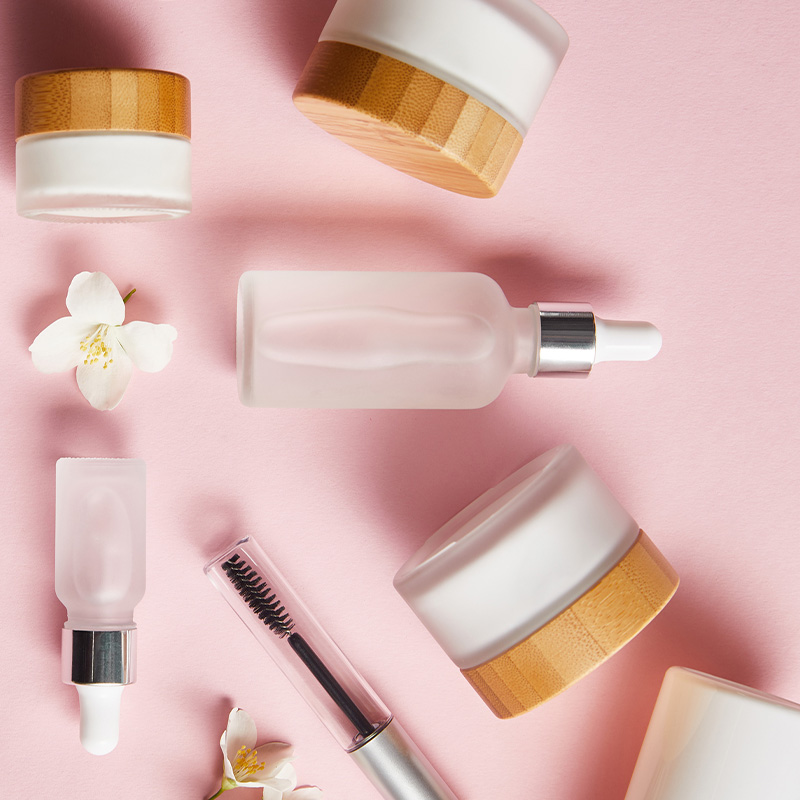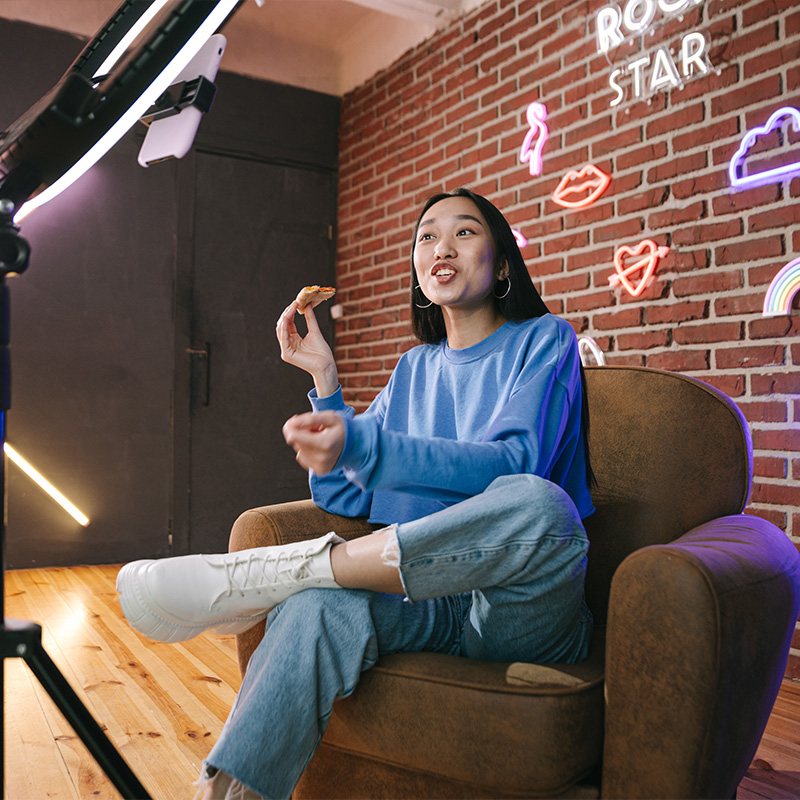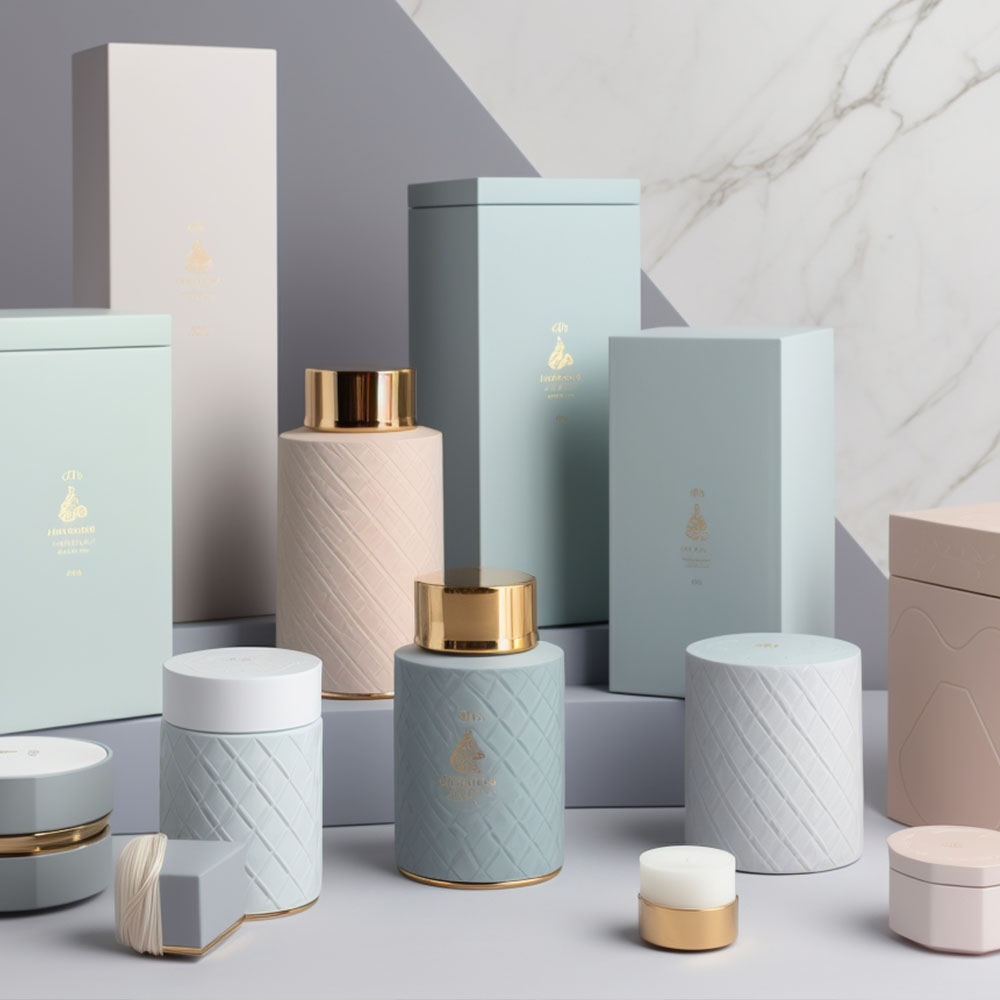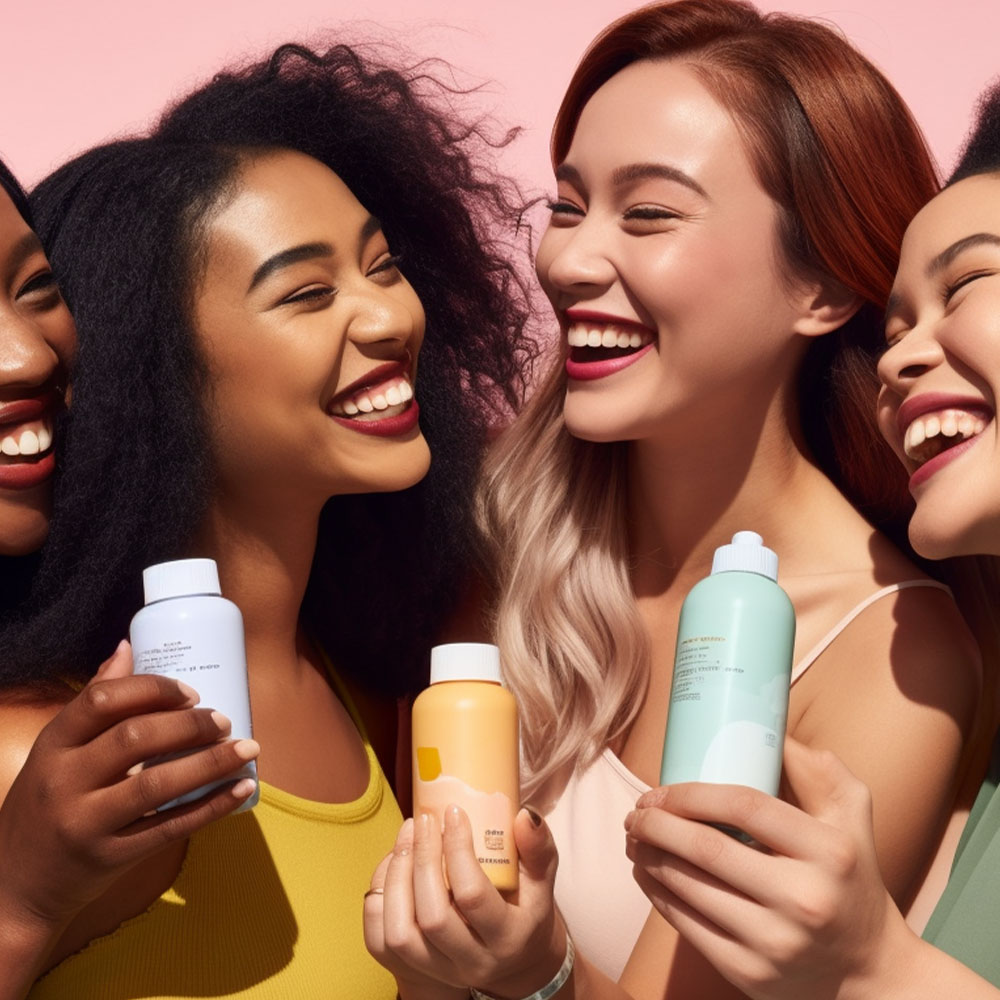
Are you tired of seeing the same old beauty influencers promoting products on your social media feeds? It’s time to switch things up and tap into a new resource for marketing: micro-influencers. These lesser-known influencers with smaller followings have a unique ability to connect with their audiences authentically, making them an untapped resource that could revolutionize the beauty industry.
As a digital marketing expert specializing in micro-influencer and beauty brand partnerships, I’ve seen firsthand how effective these collaborations can be. Micro-influencers may not have millions of followers, but they often have highly engaged communities that trust their opinions and recommendations. The key is finding the right micro-influencer who aligns with your brand values and has a genuine passion for your products. In this article, we’ll dive deeper into why micro-influencers are worth considering for your next beauty campaign and how to partner with them successfully.
Defining Micro-Influencers
Picture this: you’re scrolling through social media, and one of your favorite beauty bloggers is raving about a new product. Naturally, you trust their opinion because they seem authentic and relatable – that’s the power of micro-influencers.
Defining micro-influencers: Importance and Impact
Micro-influencers have an engaged following ranging from 1,000 to 100,000 followers on social media platforms like Instagram or YouTube. They offer niche content in specific beauty, fashion, travel, and lifestyle areas. These creators have built a community around them based on shared interests and values; hence their opinions hold enormous value when recommending products.
The importance and impact of micro-influencer marketing cannot be overstated. Brands recognize that these smaller-scale influencers can drive significant engagement rates while maintaining credibility with their audience. In addition, micro-influencers create user-generated content (UGC), which garners higher conversion rates than traditional brand-created ads.
Identifying Micro-influencers: Criteria and selection process
When identifying potential micro-influencers for campaigns, it’s essential to consider criteria beyond just follower count. The engagement rate is crucial as it indicates how active an influencer’s audience is with their content. Relevance to the brand or campaign message is also critical; partnering with influencers who align with your brand values ensures authenticity in messaging.
The selection process should include reviewing past collaborations, analyzing the followers’ demographics, and evaluating post quality and consistency, among other factors. Identifying suitable partnerships candidates may take time, but investing in research upfront pays off long-term.
In conclusion,
As we’ve seen above, defining a micro-influencer involves considering more than just follower counts. The importance of collaborating with these creators lies in their ability to generate engaging UGC catered towards highly targeted audiences leading to increased conversions per dollar spent by brands seeking digital marketing solutions today!
The Advantages Of Working With Micro-Influencers
As mentioned in the previous section, micro-influencers have a smaller following than traditional macro-influencers. However, their impact on their audience is significant due to their highly engaged followers who trust and relate to them. In this section, we’ll be discussing the advantages of working with micro-influencers for beauty brand marketing.
One advantage of collaborating with micro-influencers is that they offer collaborative opportunities for brands. Since these influencers usually have fewer sponsorship deals than more prominent influencers, they can focus more on creating high-quality content and building an authentic relationship with your brand. You can work closely with them to create campaigns that resonate well with their niche audiences while keeping up with the latest trends in beauty.
Another advantage of using micro-influencer marketing strategies is their cost-effectiveness. Compared to hiring top-tier celebrities or macro-influencers, partnering with micro-influencers requires less budget allocation while achieving similar results. This means you have more room for experimentation when trying out new campaigns without risking much of your advertising budget.
Micro-influencer marketing also offers niche marketing strategies since each influencer caters to specific demographics within their community. For instance, if you’re launching a skincare product targeting women over 40, working with a micro-influencer who fits that age range will give you better chances of reaching potential customers who fit this demographic profile. It’s like having access to sub-communities within social media platforms where you can tailor-fit messages depending on their interests and preferences.
In summary, using micro-influencers as part of your beauty brand marketing strategy presents many benefits. From collaborative opportunities for creative output and cost-effective rates to tailored niche-marketing strategies – every aspect works towards maximizing ROI while improving engagement rates among target audiences.
Building Trust With Authenticity
Picture this scenario: You’re browsing through Instagram, and you come across a post showcasing a new beauty brand. The caption reads like an ad, with generic messaging that could apply to any product on the market. Would you be more likely to trust the brand and purchase its products or keep scrolling? Chances are, most people would choose the latter.
Building trust through transparency and authenticity in marketing messaging is crucial for brands looking to connect with consumers. Micro-influencers can play a significant role in achieving these goals. By partnering with authentic influencers who genuinely believe in their message and product, beauty brands can cut through the noise of traditional advertising and build genuine connections with potential customers.
Here are three ways micro-influencers help build trust and authenticity:
- Niche expertise – Many micro-influencers have built up a loyal following by sharing their specific knowledge about skincare routines or makeup techniques. Brands that partner with these influencers benefit from their deep understanding of what works (and what doesn’t) within their niche.
- Genuine connection – Unlike more prominent influencers who may work with dozens of brands at once, micro-influencers often have fewer partnerships which allow them to form deeper relationships with each one. These genuine connections translate into honest reviews and recommendations that resonate with audiences.
- Relatable content – Authenticity isn’t just about being transparent; it’s also about creating content that feels relatable to your audience. Micro-influencers excel at this because they often produce content featuring themselves using products in everyday settings rather than highly stylized shoots.
When building trust with today’s discerning consumers, there’s no substitute for authenticity in marketing messaging. However, by partnering with micro-influencers who embody these values, beauty brands can create meaningful connections that drive engagement and sales without sacrificing integrity or credibility.
Finding The Right Micro-Influencer For Your Brand
Micro influencer outreach is crucial for beauty brands to build a loyal following and increase sales. However, finding the right one can be overwhelming with so many influencers. To simplify the process, it’s essential to narrow your search by evaluating influencer metrics such as engagement rates, follower count, and content quality.
When looking at engagement rates, focusing on more than likes is essential. Comments and shares are also critical indicators of an engaged audience. Additionally, consider the influencer’s follower count about their engagement rate; a high number of followers but low engagement could indicate fake or purchased followers.
Content quality is another crucial factor when evaluating potential micro-influencers. Look for influencers who produce visually appealing content that aligns with your brand’s aesthetic and messaging. Ensuring the the influencer’s values and beliefs align with your brand’s is also essential.
Once you’ve narrowed your list of potential micro-influencers based on these metrics, start reaching out! Personalized messages go a long way in building relationships with influencers. Be clear about what you’re looking for in a partnership and how you see them fitting into your marketing strategy.
Incorporating micro-influencers into your beauty brand marketing strategy can benefit significantly if done correctly. By taking the time to evaluate influencer metrics and find the right fit for your brand, you’ll be able to tap into an untapped resource that has the potential to take your business to new heights.
Crafting An Effective Partnership Strategy
Picture this: you’re a beauty brand on the rise, and you’ve just stumbled upon an untapped resource for marketing – micro-influencers. Of course, working with these influencers can benefit your brand in many ways, but how do you craft an effective partnership strategy?
One key factor to consider when partnering with micro-influencers is developing long-term partnerships. This means looking beyond one-off collaborations and investing in relationships that will last over time. Not only does this help build trust and loyalty between your brand and the influencer, and allows for more creative opportunities as both parties get to know each other’s strengths and preferences.
Another critical aspect of a successful partnership strategy is influencer compensation. While some brands may offer products or exposure as payment, it’s crucial to remember that micro-influencers run their businesses and deserve fair compensation for their time and efforts. Whether through monetary payment or mutually-beneficial perks like exclusive access to events or products, finding ways to compensate your influencers fairly will help ensure a positive relationship moving forward.
Ultimately, crafting an effective partnership strategy comes down to understanding what your brand and the micro-influencer bring. Then, by building long-term relationships based on mutual respect, clear communication, and fair compensation, you can tap into the full potential of these valuable resources for your beauty brand marketing efforts. So don’t hesitate – to start exploring new possibilities today!
Leveraging Social Media Platforms
Social media trends are constantly evolving, and for beauty brands, it’s crucial to stay up-to-date with the latest developments. One of the most significant social media trends in recent years has been the rise of influencer marketing strategies. More and more companies are working with influencers to promote their products and reach a wider audience. Micro-influencers have proven to be an excellent resource for this purpose.
Micro-influencers typically have smaller followings than celebrity influencers but can still considerably impact their audiences. These individuals often have highly engaged followers who trust their recommendations and opinions. By partnering with micro-influencers, beauty brands can tap into these loyal fan bases, potentially reaching thousands or even millions of people through organic promotion.
To make the most of influencer marketing strategies, it’s essential to leverage various social media platforms effectively. Different platforms attract different demographics and user behaviors; understanding these nuances is critical to creating successful campaigns. For example, Instagram is undoubtedly one of the best platforms for beauty brand marketing since it allows visual content like makeup tutorials and product demos to shine.
Creating engaging content that aligns with your brand values is also critical when working with micro-influencers. You want their posts to feel authentic while naturally showcasing your products. To do this successfully, consider providing them with samples or access to events so they can experience your brand firsthand before promoting it online.
Remember: Influencer marketing isn’t just about getting someone famous to endorse your products – It’s about building relationships with influential people who share similar values as your brand. By leveraging social media platforms and micro-influencers’ unique voices, beauty brands can create compelling campaigns that resonate deeply with consumers looking for something extra from their favorite brands.
Measuring Success And Roi
Identifying Targets: We need to identify our target audience and the right micro-influencers to capture that audience’s attention accurately.
Data Analysis: Once we have our targets, we can analyze data to see which influencers best suit our brand message.
ROI Calculations: We can then measure the engagement and conversions generated by each influencer’s content. We can also track other metrics like brand awareness and loyalty.
Identifying Targets
As a micro-influencer and beauty brand marketing expert, identifying targets is the first step in measuring success and ROI. Targeting demographics such as age, gender, location, income level, and interests can help pinpoint potential consumers more likely to engage with your content.
Analyzing engagement rates of previous campaigns can also provide insight into which audience segments were most receptive to messaging. This information can be used to refine targeting strategies for future campaigns, ensuring that efforts are focused on those individuals who are most likely to convert into customers.
It’s important to remember that while prominent influencers may have higher follower counts, micro-influencers often have stronger connections with their audiences due to their niche focus and engaged followers. By partnering with micro-influencers whose target demographic aligns with your own, you can tap into an untapped resource of loyal followers who trust the influencer’s opinion and recommendations.
Identifying targets through carefully analyzing demographics and engagement rates is crucial in achieving successful outcomes when working with micro-influencers. By taking the time to understand your target audience and forging partnerships with relevant influencers, beauty brands can effectively reach new customers and drive measurable results without breaking the bank.
Data Analysis
Now that we have discussed the importance of identifying targets in measuring success and ROI let’s delve deeper into data analysis. In today’s fast-paced digital world, where social media trends change daily, beauty brands must stay on top of their game by analyzing the engagement rates of previous campaigns.
Data analysis is crucial for determining which influencers deliver the most value to your brand and drive the highest influencer engagement rates. By carefully scrutinizing metrics such as reach, impressions, clicks, conversions, and customer feedback, you can identify patterns that indicate which content resonates best with your target audience.
In addition to assessing past performance, monitoring emerging social media trends and adapting accordingly is essential. For example, short-form video content has become increasingly popular on platforms like TikTok and Instagram Reels. By partnering with micro-influencers who specialize in creating engaging videos, beauty brands can tap into this growing trend and connect with a broader audience.
To sum up, data analysis is vital in measuring success and ROI when working with micro-influencers. By leveraging insights from past campaigns while staying abreast of current social media trends, beauty brands can optimize their influencer marketing strategies for maximum impact. Remember that practical data analysis is an ongoing process that requires constant monitoring and adaptation – so be prepared to adjust your approach based on new insights!
ROI Calculations
Now that we have discussed the importance of data analysis in measuring success and ROI when working with micro-influencers let’s dive deeper into one crucial aspect: ROI calculations. As a beauty brand marketing expert, you need to be able to calculate your return on investment accurately. This calculation involves comparing the cost of partnering with an influencer against the revenue generated from their promotion.
To determine ROI, you must establish clear objectives for each campaign and allocate a specific marketing budget accordingly. From there, track key metrics such as influencer engagement rates, website traffic, or sales conversions resulting from the partnership. By analyzing these figures carefully, you can identify and adjust which influencers deliver the best results for your brand.
Navigating Legal And Ethical Considerations
As the beauty industry shifts towards micro-influencers, brands must know the disclosure requirements when working with these individuals. It is essential for both the brand and influencer to disclose any paid partnerships or sponsored content to maintain transparency with their audience. This protects the brand from legal issues and builds trust between influencers and owners.
In addition to disclosure requirements, micro-influencers must be compensated fairly for their work. Brands should offer compensation that aligns with the value that these influencers bring to their marketing efforts. While some may argue that offering free products is sufficient payment, it is essential to recognize that these influencers put time and effort into creating content on behalf of a brand and deserve fair compensation.
When navigating legal and ethical considerations when working with micro-influencers, brands must establish clear guidelines and expectations. For example, contracts should outline details such as compensation, length of the partnership, and specific deliverables expected from the influencer. This ensures that both parties are on the same page and reduces the likelihood of misunderstandings or legal disputes.
Partnering with micro-influencers can be a valuable strategy for beauty brands looking to reach new audiences. However, it is essential to approach these partnerships ethically by adhering to disclosure requirements, compensating influencers fairly, and establishing clear guidelines upfront. By doing so, brands can build strong relationships with influential individuals while maintaining credibility among consumers.
Micro-Influencer Case Studies In Beauty Brand Marketing
As we navigate the legal and ethical considerations of micro-influencer marketing, we must remember that these individuals can be a powerful resource for beauty brands. Micro-influencers have repeatedly proven that they can drive engagement and sales in ways that traditional advertising cannot.
Let’s look at some micro-influencer success stories in the beauty industry. For example, one brand enlisted the help of a group of micro-influencers to promote its new line of lipsticks. These individuals shared swatches, reviews, and tutorials on their social media platforms, which led to an increase in website traffic and overall sales.
Another brand partnered with a small group of micro-influencers who had a strong following within the skincare community. They created content showcasing how each influencer incorporated the brand’s products into their daily routine. This campaign resulted in increased visibility for the brand and ultimately drove more conversions than any previous campaigns.
The impact of micro-influencers on consumer behavior should not be underestimated. Their ability to connect with their followers personally creates trust and authenticity that is hard to replicate through other forms of advertising. By partnering with these individuals, beauty brands can tap into this sense of trust and create meaningful relationships with potential customers.
In conclusion, as we move forward in the world of digital marketing, it is clear that micro-influencers will continue to play an essential role in shaping consumer behavior. As experts in beauty brand marketing, we must recognize this untapped resource and utilize it effectively if we want to stay ahead of the curve. So why wait? It’s time to start exploring all the possibilities of partnering with micro-influencers!
The Future Of Micro-Influencer Marketing In The Beauty Industry
As we move forward, it’s clear that micro-influencers will continue to be a valuable resource for beauty brands. This is especially true considering their impact on traditional advertising methods. With consumers becoming more and more immune to traditional forms of marketing, such as TV commercials or print ads, micro-influencers offer a fresh and trustworthy approach to promoting products.
Of course, with any trend comes competition – which is undoubtedly true regarding macro influencers. However, while macro-influencers might have more significant followings, they often lack the authenticity and connection that micro-influencers bring. For beauty brands looking to connect with their target audience indeed personally, partnering with micro-influencers remains an effective strategy.
Overall, the future of micro-influencer marketing in the beauty industry looks bright. As technology progresses and social media platforms evolve, these individuals are likely to become even more influential than they already are. By building authentic relationships with them now, beauty brands can stay ahead of the curve and continue delivering innovative marketing strategies that resonate with consumers.
It’s clear that micro-influencers have significantly impacted how beauty brands market themselves online – but what does this mean for the future? While only time will tell exactly where things are headed, one thing is sure: companies that embrace this new way of thinking about influencer marketing will reap the rewards well into the future. So whether you’re just getting started or have been working with micro-influencers for years, don’t hesitate to explore all the possibilities in this exciting space!
Conclusion
As a micro-influencer and beauty brand marketing expert, I can confidently say that the untapped resource for your brand is working with micro-influencers. These individuals have smaller followings but higher engagement rates, making them perfect for targeted campaigns. By partnering with micro-influencers, you can build trust with authenticity and reach niche audiences in the beauty industry.
But how do you find the right micro-influencer? Crafting an effective partnership strategy and measuring success is vital to ensure ROI in this growing market. And don’t forget about legal and ethical considerations! With successful case studies already out there, it’s clear that the future of beauty brand marketing lies in utilizing the power of micro-influencers. So why not take advantage of this game-changing tool today?
Start building your brand with us today. Click here.









